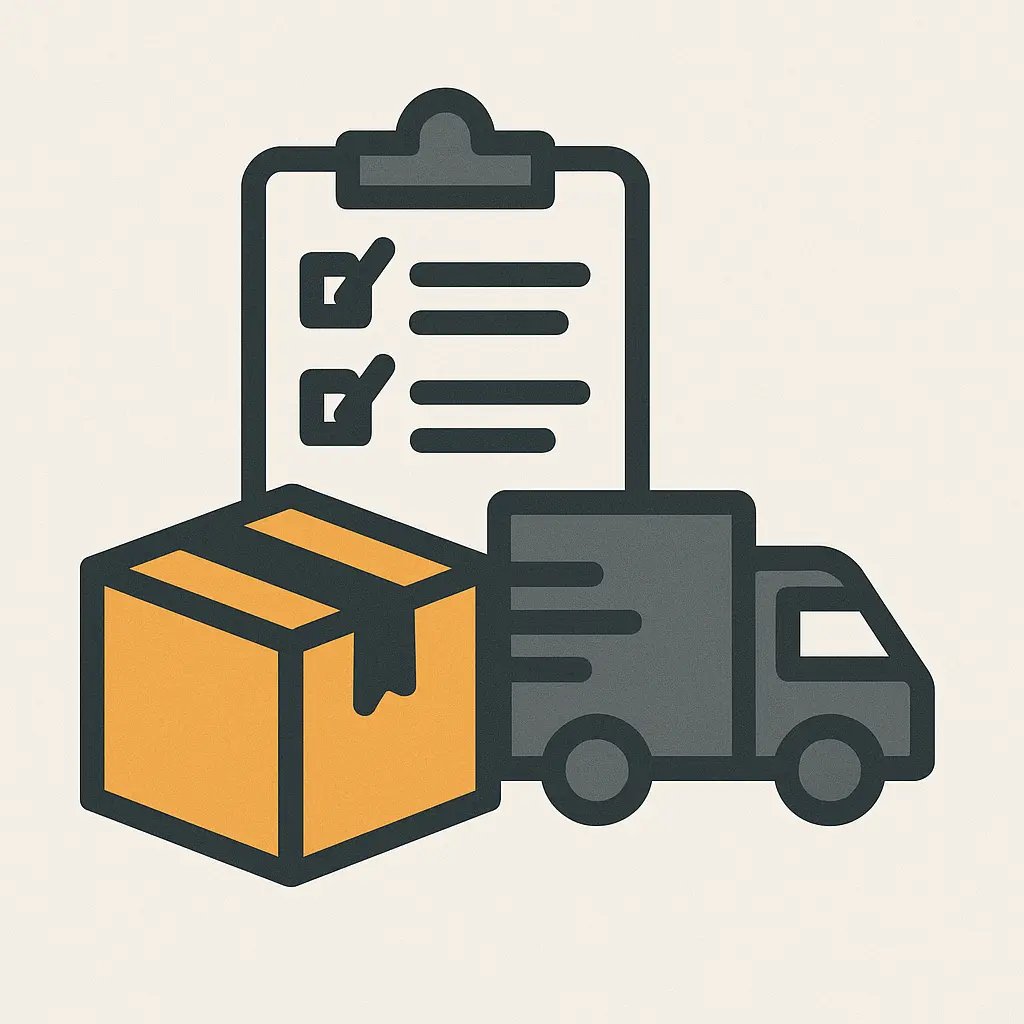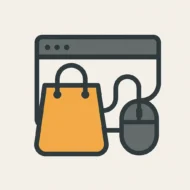
I’m Kayla. I run small online shops. I’ve packed boxes at my kitchen table. I’ve also shipped things I never even touched. That last part is what this is about.
Blind drop shipping sounds fancy, but it’s pretty simple. A supplier mails the item straight to the customer. The box has no supplier logo. No invoice. It looks like it came from “my” store. Clean. Quiet. Kinda sneaky, but not shady—just plain packaging.
You know what? It worked better than I thought. But it also bit me a couple times.
If you’re brand-new to drop shipping itself, this concise primer will walk you through the core model, pros, and pitfalls before you jump into the blind version.
So… what is blind drop shipping?
- The supplier ships for you.
- They don’t put their name on the label.
- There’s no invoice or flyer inside the bag.
- The customer only sees your brand name in emails and on the site.
That’s the dream. But people are people. Mistakes slip in. Let me explain.
For the full story of my first blind drop-shipping trial—numbers, face-palm moments and all—you can read the extended case study on the CandyPress blog: I Tried Blind Drop Shipping—Here’s What Actually Happened.
My setup (tools and little habits)
I used Shopify for my store.
If you ever want a .NET-based storefront instead, the open-source CandyPress platform is an underrated alternative worth exploring.
DSers helped me push orders to AliExpress. I also used CJdropshipping for faster shipping on some items. I left a default note on every order: “No invoice, no logo, plain packaging please.” Simple words worked best.
For tracking, I used AfterShip for a while, then Track123. For email and receipts, I used OrderlyEmails and Klaviyo. Customer messages lived in Zendesk. Nothing wild here—just the usual stack.
I kept a small PO Box in Ohio as my return address. It cost a little, but it saved my butt.
Real example #1: The pet hair roller
This one made me smile. I ran a small pet shop theme in May 2024.
- Product: Pet hair remover roller (the pink one with a flip lid)
- Supplier: AliExpress, “Ships from CN”
- Cost: $4.20
- Shipping to the U.S.: $6.50 (AliExpress Standard)
- My price: $19.99
- Orders: 127 in one month
- Average ship time: 12–16 days
- Packaging: plain gray bag, no invoice
Profit was about $9 a sale before ads. I ran Facebook ads at about $8–$10 per purchase. So yes, thin margin, but it was steady. Only three customers asked, “Where did this ship from?” I told them, “From our partner warehouse.” True enough.
The best part? No supplier logos. Not even a tiny card. It felt clean.
And discretion matters in more than just shipping. If you’re the kind of person who likes to keep personal adventures equally low-key—say you’re in the French Riviera and want a casual meet-up without leaving a trail—check out Plan Cul Nice for a privacy-first rundown of trusted spots, safety pointers, and simple steps to arrange a no-strings rendez-vous around Nice.
Real example #2: The LED closet light…and that rogue thank-you card
In August 2024, I sold a motion LED closet light. The kind you slap under a shelf and charge by USB.
- Supplier: CJdropshipping, U.S. warehouse
- Ship time: 3–5 days (nice)
- Orders: 63 in two weeks
- Price: $24.95
- Cost + ship: about $14.40
Then the weird thing hit. One batch had a little “thanks” card inside. It had the supplier’s brand. Eight customers got it. Two emailed me photos. My stomach dropped.
I sent each of them a quick sorry and gave a $5 refund. The supplier gave me a $12 credit total. We added a note to the ticket: “No insert cards—ever.” It didn’t happen again, but it taught me to test more.
If you’re curious how blind shipping looks in a more fragrance-friendly niche, check out this deep dive on drop-shipping candles.
Real example #3: The headlamp beanie during holiday rush
November and December 2024 were wild. I pushed a knit beanie with a pop-out LED light. A gift hit, for sure.
- Orders: 412 across Nov–Dec
- My price: $24.99
- Cost: $7.90
- Ship: $4.30–$6.10
- Average ship time: 6–9 days (some slower near Christmas)
I wanted a tiny “brand” feel without breaking the blind rule. So I bought 500 plain black boxes and a batch of logo stickers from Sticker Mule. CJ applied the sticker for $0.35 a unit. Still blind, but a bit more “mine.”
Return rate was 4.3%. A winter storm delayed 19 packages. A few folks got cranky, but the plain box never got blamed. It actually calmed things down because it looked neat and normal.
The parts that made me groan
Returns were the biggest pain. When there’s no supplier info on the label, people ask, “Where do I send this?” If you don’t give them a return spot, they might guess. One buyer in Texas mailed a scarf back to a random address in Shenzhen because the carrier print had tiny Chinese text. That was a mess.
What I did after that:
- I put my PO Box on the packing slip (when I used one).
- I added a big “How to return” section in order emails.
- I sent a prepaid label when the item was under one pound.
Another headache? Chargebacks. I had two. One customer said “Item not as described.” I sent screenshots of the listing, the tracking page, and the chat log. Both were closed in my favor, but it took time.
Those frustrating admin spirals also reminded me that e-commerce isn’t the only unconventional way people bankroll their lifestyle. If you’ve ever wondered what an arrangement-based income stream looks like from the inside, check out Sugar Baby Lynn—she breaks down real-world allowance numbers, safety protocols, and messaging scripts that help keep the cash coming without the corporate drama.
The good stuff that kept me going
- Fewer “Is this from AliExpress?” emails. Blind packing helps a lot.
- The unboxing felt clean. No crumpled ads. No random flyers.
- It made my store feel real, even without stacks of stock in my garage.
- I could test products fast. If a product flopped, I just stopped selling it. No boxes to trip over.
Honestly, that last one is the thing. I like my hallway clear.
Costs and little numbers that matter
- Test orders: I placed three test orders to my house for every new supplier. One time, I asked them to write “Kayla test” near the label. They did. Trust earned.
- PO Box: $13 a month near me.
- Sticker application: $0.35 per unit at the warehouse, worth it.
- Refund budget: I set aside 2% of monthly sales for goodwill refunds or small credits. It kept me calm.
- Ad set rule: If cost per purchase stayed over $10 for 72 hours on a $20 item, I paused it. I’d rather breathe than chase pennies.
Tiny things that saved me time
- A default DSers note: “No invoice, no logo, no inserts. Plain bag or box.”
- A branded tracking page with Track123. Customers clicked that link first, not my inbox.
- A return page that says, in bold: “We ship in plain packaging. Returns must go to our PO Box. Don’t send to the sender address.”
Small words. Big help.
A quick detour: Chinese New Year
Shipping slowed in late January and early February. I put a banner on my site: “Orders may take a few extra days due to the holiday.” I also picked a few U.S. warehouse items for that window—socks, mini flashlights, silicone kitchen mats. Boring, but fast. My support inbox stayed calm.
Would I do blind drop shipping again?
Yes—but only with suppliers who prove it. I ask for a photo of the packed item. I place test orders. I keep that PO Box. And I set gentle expectations on my site: “Ships in plain packaging.”
It’s not magic. Some days it made me sigh. But it let me run lean, try new products, and still look put together.
If you’re thinking about it, here’s my short list:
- Place a test order to yourself. Then one to a friend.
- Set a return address that you control.
- Use “no invoice, no logo” on every order message.
- Keep items under 1 lb and under 16 inches for cheaper returns.
- Budget for 2–3% refunds
